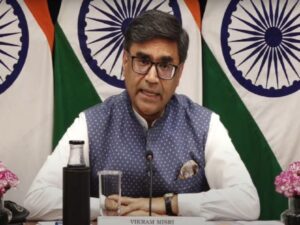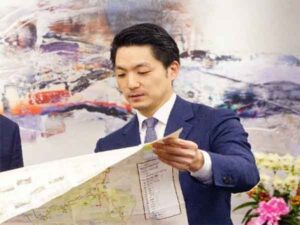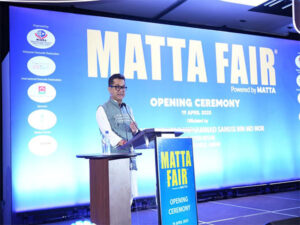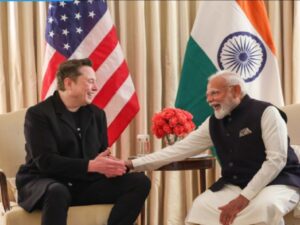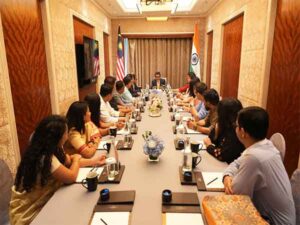Boeing Starliner with Sunita Williams onboard could wait months in space before return as NASA mulls extending mission duration
Washington, DC [US], June 29 (ANI): Projected to last only days, the first crewed test flight of Boeing’s Starliner spacecraft with two astronauts onboard is in limbo with no exact return to Earth announced.
NASA’s Commercial Crew Program manager, Steve Stich has said that the US space agency is considering extending the duration of Starliner’s mission from 45 days to 90 days, CNN reported.
Officials have repeatedly hinted that the Starliner, which faced issues with helium leaks and thruster outages heading to the International Space Station in early June, will be safe to bring astronauts including indian-origin Sunita ‘Suni’ Williams and Butch Wilmore home.
On Friday, Stich said that NASA is considering extending the maximum length of Starliner’s mission from 45 days to 90 days and there is no firm return date on the horizon, according to CNN report.
Addressing a briefing on Friday, the NASA official said, “We’re just looking at the timeline to execute (the test in New Mexico) and then review the data.” He further said, “And that’s what’s really the long pole, I would say, determining a landing date.”
Stich added, “We’re not in a rush to come home.”
Part of that desired extension is due to the ground tests that Boeing and NASA plan to conduct in New Mexico, seeking to better understand why some of the Starliner’s thrusters unexpectedly failed during the first leg of its journey.
Stich and Mark Nappi, vice president and program manager of the Commercial Crew Program for Boeing, also said that engineers are still not certain about the reason behind the Starliner’s problems.
Nappi said that part of the aim is conducting the ground tests while the vehicle is still in space is to try to whittle down possible reasons why the thrusters malfunctioned.
Mark Nappi said, “So, if (the test in New Mexico) comes back and gives us all the answers, then we can just undock and come home.”
He added, “If it comes back and says, ‘Here’s 80 per cent of the answer. And if you just run one more docked hot fire (test on the Starliner in orbit), then you can get 100 per cent of the answers’ — then we want (Starliner) to be there so that we can get that information.”
Meanwhile, Williams and Wilmore have integrated with the rest of the crew currently aboard the International Space Station and are conducting routine tasks.
Several more helium leaks were identified while the craft was heading to the International Space Station, along with the thruster issues. The Starliner’s service module, a cylindrical attachment at the bottom of the spacecraft that provides much of the vehicle’s power during flight, faced several issues, CNN reported.
As per the design, the service module will not survive the return to Earth. The module is jettisoned and destroyed as the Starliner spacecraft reenters the atmosphere and that’s the reason why Boeing and NASA teams then opted to leave the Starliner spacecraft safely docked with the space station while they worked to learn as much as possible about those issues.
It is not clear yet whether NASA will extend the maximum mission length to 90 days. Stich said officials must clear the battery life of the Starliner for that purpose. Although he noted that the batteries are being recharged at the space station, they should operate the same way after 90 days as they will for the first 45 days.
The spaceflight industry frequently experiences cost overruns, delays and unmet deadlines. However, Boeing has faced challenges that have stood out, particularly when the Starliner program is directly compared with SpaceX’s Crew Dragon, CNN reported.
Crew Dragon, which falls under the same NASA Commercial Crew Program for astronaut transportation, completed its first test flight in 2020 and has been carrying out routine missions ever since.
SpaceX did not have the benefit of designing the Crew Dragon spacecraft off the back of its Cargo Dragon vehicle, which for years sent supplies to the International Space Station before its successor started operating while Boeing designed Starliner from scratch.
Nappi said, “We’ve got a really good test flight that’s been accomplished so far, and it’s being viewed rather negatively.”
In the latest update regarding the ongoing space mission, the Expedition 71 crew members on Friday packed a US cargo craft, cleaned up the International Space Station, studied techniques of futuristic piloting, and carried out eye exams.
NASA’s Boeing Crew Flight Test astronauts spent the day reconfiguring a space botany facility. In its live blog, NASA stated, ” Robotics controllers are scheduled to detach the Cygnus space freighter from the Unity module on July 12 and release it into Earth orbit for disposal over the South Pacific Ocean ending a five-and-a-half-month mission at the orbital lab.”
NASA Flight Engineer Matthew Dominick spent most of the time on Friday on loading trash and discarding gear inside the Cygnus with assistance from fellow NASA astronauts Jeanette Epps and Tracy C Dyson. Canadarm2 robotic arm captured the Cygnus on February 1, with more than 8200 pounds of science experiments and crew supplies.
Epps operated standard medical imaging gear found in an optometrist’s office on Earth and peered into Dyson’s eyes. She examined the cornea, retina, and lens of Dyson to help flight surgeons understand and counteract microgravity’s effect on crew vision.
Earlier, Dyson collected and stowed excess space station hardware for disposal. During the day, NASA Flight Engineer Mike Barratt routed cables and reprogrammed communications systems inside the Columbus laboratory module.
He stowed hardware and components used earlier in the week for advanced orbital plumbing in the Tranquility module’s bathroom. Mike Barratt refilled supply kits in Columbus’ two Human Research Facility racks with biomedical gear, including sample tubes and needles.
On Friday, Starliner’s Commander and Pilot, Butch Wilmore and Sunita Williams in Kibo conducted space botany work. They removed the Plant Habitat growth chamber from Kibo’s EXPRESS rack, replaced its camera and carbon dioxide sensors, then reinstalled the research device.
In the liveblog, NASA said, “NASA and Boeing continue to evaluate Starliner’s propulsion system performance before returning to Earth from the orbiting lab. NASA and Boeing leaders participated in a media teleconference today to discuss Starliner and station operations.”
“NASA is now targeting the end of July for the next spacewalk outside the space station. This change allows teams on the ground to continue to troubleshoot and understand the water leak in the service and cooling umbilical unit that forced an early end to a spacewalk on Monday, June 24,” it added.
Flight Engineer Nikolai Chub practiced planetary spacecraft and robotic piloting techniques future crew members and conducted two sessions of an investigation exploring ways to create new materials on the lunar surface.
Meanwhile, Flight Engineer Alexander Grebenkin worked throughout the day inventorying medical kits and cleaning fans inside the Rassvet module and Station Commander Oleg Kononenko replaced thermal components in Roscosmos’ life support hardware.

